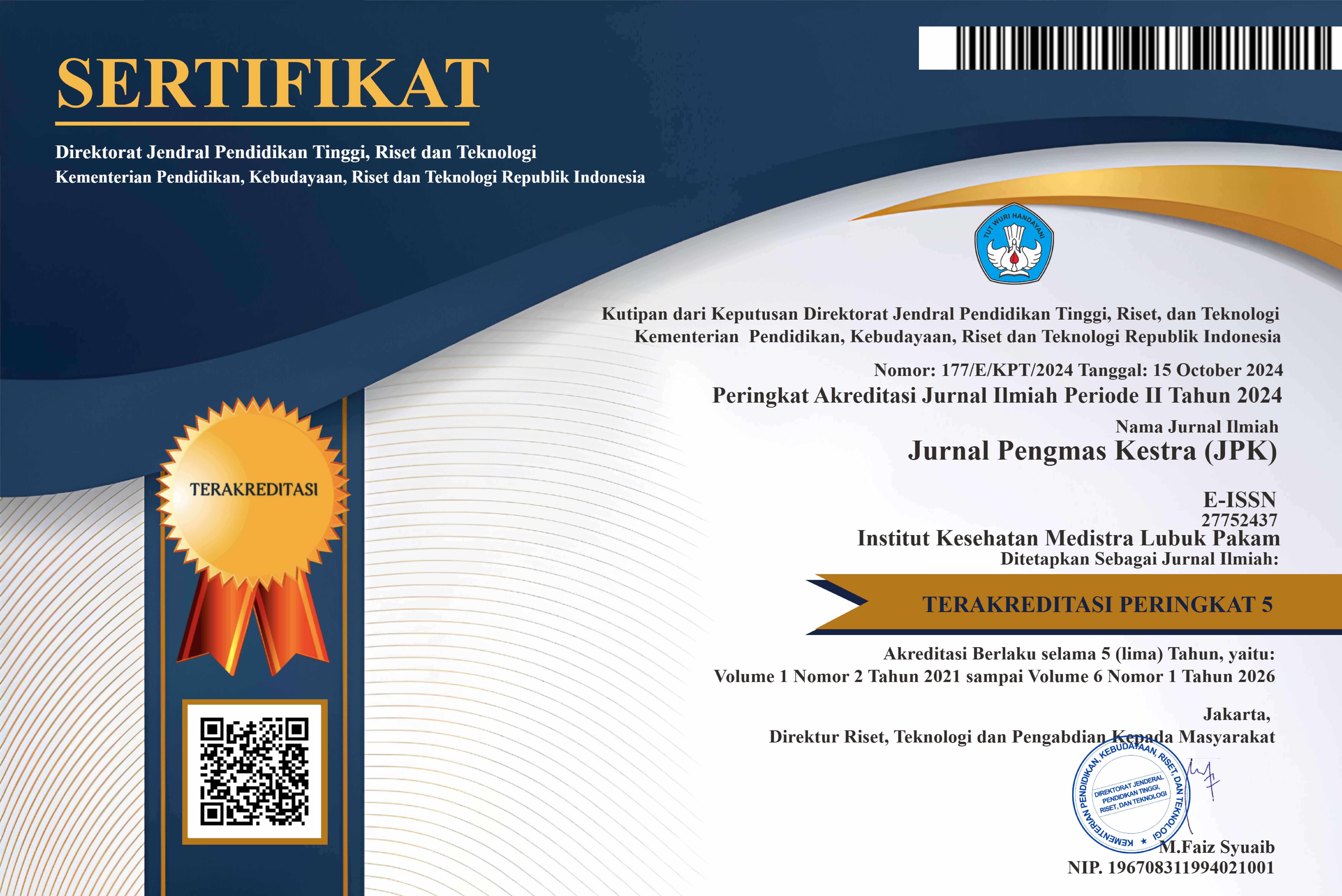Education of Birth Ball Training as Therapy to Relieving Labor Pain
DOI:
https://doi.org/10.35451/jpk.v4i1.2207Keywords:
Education, Birth ball exercises, Labor pain, TherapyAbstract
Labor pain arises because of the mother's physical and psychological response. Emotions become unstable due to anxiety and fear which worsen the condition of labor pain. The pain experienced by the mother during labor can give rise to fear which makes her anxious and often leads to panic attacks. This condition causes a physiological response that can disrupt the condition of the uterus when it contracts so that the impact of labor will last a long time. Usually, the mother who is about to give birth will find it difficult to adjust to the conditions of labor pain, so that uterine contractions cannot be controlled which causes the first stage to lengthen and the fetus to be disturbed. A prolonged labor process is a type of birth complication that is worrying, complicated, and unpredictable. A non-pharmacological method that can reduce labor pain is birth ball therapy. Research that has been conducted has found that birth ball exercises affect reducing labor pain. PkM is implemented through educational activities where there are 30 PkM participants. The results of the PkM implementation show that the PkM participants have been successfully educated through this PkM activity so that they can apply birth ball exercises to reduce labor pain in mothers. Due to the implementation of this PkM activity, it is hoped that there will be an increase in the knowledge of midwives who play a role in initial level services to provide appropriate steps in dealing with labor pain in mothers using complementary therapy, and birth ball exercises.
References
Armi, Y. and Susanti, E. (2015). Efektifitas Teknik Pijat Abdominal Lifthing Terhadap Pengurangan Rasa Nyeri Persalinan Pada Ibu Primigravida Dalam Persalinan Kala I Di Bidan Praktek Mandiri Bd.“Y” Lubuk Alung Tahun 2014’, Jurnal Kesehatan, 5(1).
Aryani, Alyensi, Y, Fatiyani F, I. (2018). Hubungan Pengetahuan Bidan dan Penilaian Teknik Penggunaan Bola Persalinan Terhadap Intensitas Nyeri Kala I Persalinan Normal di Klinik Taman Sari Kota Pekanbaru’. Jurnal Proteksi Kesehatan, Vol 5 No 2
Ferinawati & Zahara, Rita. (2021). Pengaruh penggunaan birthing ball terhadap penurunan tingkat nyeri pada ibu bersalin di BPM Yulia Fonna AMdKeb, SKM Desa Lipah Rayeuk Kecamatan Jeumpa Kabuaten Bireuen. Journal of Healthcare Technology and Medicine Vol. 7 No. 2 Oktober 2021. Universitas Ubudiyah Indonesia
Kurniawati, A., Dasuki, D., & Kartini, F. (2017). Efektivitas Latihan Birth Ball Terhadap Penurunan Nyeri Persalinan Kala I Fase Aktif Pada Primigravida. Jurnal Ners Dan Kebidanan Indonesia, 5(1), 1.
Prawirohardjo, Sarwono. (2016). Buku Ilmu Kebidanan Edisi 4. Jakarta: PT. Bina Pustaka sarwono prawirohardjo.
Sari, N. M., Khairi, Z., Ariani, P., Ayu, P., Ariescha, Y., Purba, T. J., Natalia, K., Ball, T. B., & I, P. K. (2021). Pengaruh Terapi Birth Ball Pada Ibu Bersalin Terhadap Nyeri Kala I Persalinan. Penelitian Kebidanan & Kespro, 3(1).
Sutriningsih, Destri,Yuhelva & Shaqinatuniss, Andiani. (2019). Pengaruh birth ball terhadap nyeri persalinan. Wellnes and healthy magazine. Volume 1 Nomor 1, Februari 2019, p125-132
Ulfah, Maria & Rosmaria. (2021). Pengaruh Terapi Birth Ball pada Ibu In-Partu terhadap Intensitas Nyeri Persalinan Kala I Fase Aktif di PMB Nuriman Rafida Jambi. Nursing Update: Jurnal Ilmiah Ilmu Keperawatan.
Downloads
Published
Issue
Section
License
Copyright (c) 2024 Riris Sitorus, Grace Erlyn Damayanti S, Yurizki Telova, Yessi Arisman, Elvi Era Liesmayani

This work is licensed under a Creative Commons Attribution 4.0 International License.
Copyright in each article is the property of the Author.




















